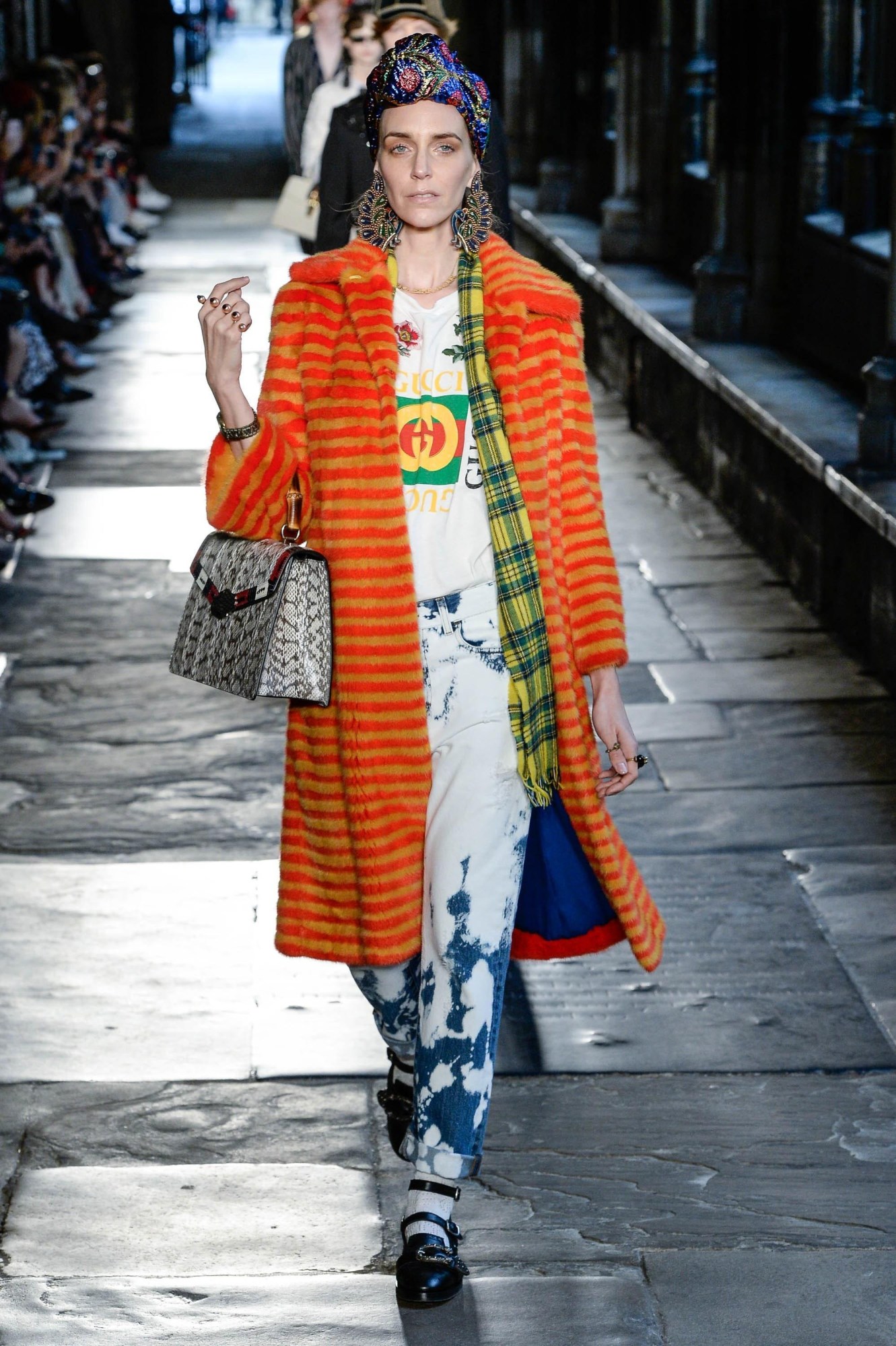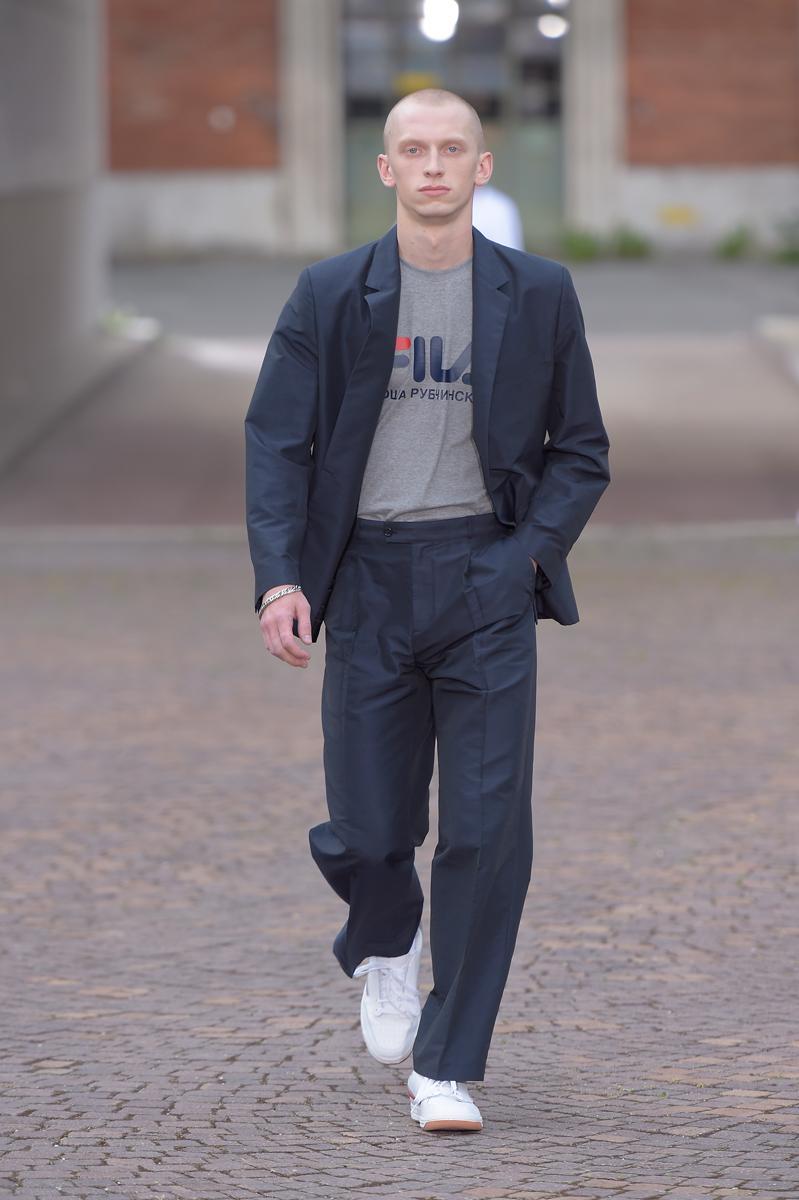When Demna Gvasalia showed his second Balenciaga menswear collection in Paris last week, it was, predictably, widely discussed in the press. The talking points included his relaxed take on office wear, normcore orthopaedic sneakers, shopping bags made of leather, but above all, the visual pastiche on Bernie Sanders’s logo. “Balenciaga 2017” with recognizable underlining stripes could be read both as a sign of affiliation with the beloved candidate defeated in the US political race, and a comment on the era of complete context collapse. It was politics bootlegged by fashion, and proof that today, it’s not that easy to distinguish real from fake.
It’s undoubtedly Vetements, Demna Gvasalia’s provocative fashion collective, which brought the notions of real and fake to the fashion industry’s surface. In October 2016, Vetements held a garage sale in Seoul, South Korea. But instead of the brand’s regular stock, on sale was a one-off The Original Fake collection. It consisted of the brand’s most popular pieces, but slightly altered to give them a ‘fake’ look. The patch jeans were turned inside out, a signature hoodie was rendered in red, and the prices for the whole range were slightly lower than the regular Vetements collections. Items sold out instantly, and the brand managed to get ahead of the cheaper knockoff by faking itself.
Gvasalia, however, isn’t the only one who’s tried to harness the unruly energy of the fake. Alessandro Michele, responsible for the dramatic Gucci reboot, released a range of T-shirts and hoodies adorned with Gucci logos which notoriously looked like vintage fakes inspired by the brand’s 80s packaging. T-shirts cost $325, and hoodies go for over a thousand, which considerably limits the clientele for the authentic pieces — although it might not matter that much. What matters is that Gucci fakes are now increasingly sought after all over eBay, and the brand is once again a talking point among hip fashion-conscious youth. In this rejuvenating spirit, Michele also collaborated with graffiti artist Trevor Andrew, aka GucciGhost, for a collection of bags, shoes, clothing, and the entire facade of the Fifth Avenue store. Printed over leather, Andrew’s DIY Gucci logos seemingly leak fresh paint, and one of the tags reads “REAL Gucci” — in case you had any doubts.

Historically, fashion bootlegging has been associated with making luxury brands more accessible for the public. We’ve all seen Chanel bags and Louis Vuitton wallets produced from cheap materials, in distorted proportions, and wrong colors. Bootleg used to be fashion’s dismissed bastard child, a side effect of unsuccessful striving for perfection. At the same time, bootlegs sometimes evolved into something culturally fascinating, like the work of now cult figure Dapper Dan who dressed 90s Harlem hip hop starts in fake Gucci and LV. His approach is more timely than ever: today fashion bootlegs are a game of irony, hype, and wit, and the game is fast.
Speed is one of the key reasons for the triumph of the bootleg. As the fashion cycle speeds up, the consumer gets bored easily — constantly bombarded by copies, imitations, “inspired by” pieces, and a stream of images of all of the above. Another reason is the death of the hierarchy of luxury. The highs and lows are mixed up: Louis Vuitton collaborates with Supreme, Gosha Rubchisnkiy with Fila, Vetements with Manolo Blahnik — and it’s not immediately obvious who is benefiting more from the collaboration. Survival in the industry today depends on constantly leaving people wanting more — through collaborations, limited editions, and even self-bootlegs.

At the same time, the power of bootleg goes much further than just a weapon of hype. Artists and independent emerging brands often use brand knockoff to comment on the nature of fashion and consumerism. In its early days, Palace Skateboards bootlegged Versace’s medusa to reclaim opulence for its skater crew. After Palace itself turned into a powerful desirable brand, HypePeace bootlegged its logo to raise money for Palestinian youth. Independent Berlin-based magazine 032c has begun (very successfully) releasing its own apparel and adding to the conversation. The magazine has made bootleg tees for Sade, Aaliyah, and Helmut Lang alongside creating its own 032c merchandise. It also released a “032c DIY Branding Kit.” The 032c tag “comes with two safety pins for you to merchify your shirt, fur coat, bomber jacket, whatever. It is an authorized bootleg, if such a thing exists. Did we just dream that into being? See, that’s the spirit.”

Artist and writer Ava Nirui stands out as the star of guerrilla appropriation even among the most masterful brand games. Inspired and appalled by Vetements’s overpriced use of Champion logo, she worked with actual Champion sweatshirts and incorporated their C logo into the names of other designers, like Rick Owens, Chanel, Gucci, and Marc Jacobs. Her other pieces merged Chanel with Kappa, Louis Vuitton with Ghostbusters, Maison Martin Margiela with McDonalds. These sardonic artifacts of late capitalism turned out to be very popular, however Nirui might be alone in her total lack of desire to sell the pieces. But even if you don’t want to play, the game is still on: apparently someone else sold a few copies of her designs. “Bootlegging my bootleg of a bootleg,” as she described it in an interview to the New York Times.
So why do fashion bootlegs inevitably get us talking? Might it be our persistent desire to be cool and accepted? But also the fact that they raise a bigger question of copy and original in contemporary culture, and whether those notions are even relevant anymore. When navigating the tricky terrain of real and fake, remember that bootlegs only work because of the the consumer’s desire — they only matter as long as you keep wanting more.
Credits
Text Anastasiia Fedorova
